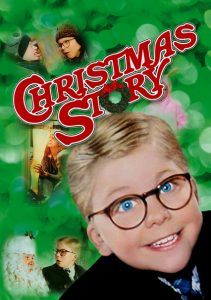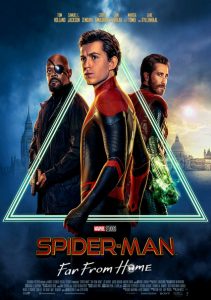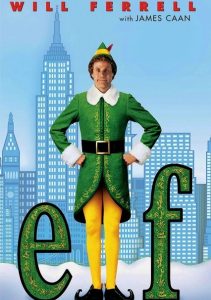A Christmas Story-1983
Director Bob Clark
Starring Peter Billingsley, Darren McGavin, Melinda Dillon
Top 250 Films #208
Scott’s Review #968
Reviewed December 16, 2019
Grade: B+
A festive holiday film sure to be watched during late December, A Christmas Story (1983) is a wholesome family treat with heart and a good slice of Americana. A clever gimmick of an adult narrating the story of his childhood holiday experience feels both fresh and nostalgic.
Some hairstyles, looks, and camera styles feel more like the 1980s than the 1940s and the subject matter of a gun becomes questionable with the passing years, but the film enchants and warms the soul with famous cult classic moments mixed in making the film memorable.
The central character is Ralphie Parker (played as a child by Peter Billingsley and voiced as an adult by Jean Shepard). Nine-years-old and clad in distinguished eye-glasses, he anticipates the approaching Christmas holiday with both excitement and trepidation.
He longs for his dream gift, a Red Ryder Carbine-Action 200-shot Range Model air rifle, which every adult he meets hazards “You’ll shoot your eye out.” Determined, he schemes to find a way to make his dreams come true and his parents to buy that gun, while avoiding the neighborhood bully.
The film has mass appeal in the casting department with each principal actor adding value, and the story just feels warm. With the lesser talent, the results may have been over-the-top, forced, or too melodramatic.
Accolades are especially deserved by Billingsley, who carries the film with his sincerity and giant blue eyes.
He is a natural and fantastic actor, especially during the more emotional scenes. Ralphie’s mother, father, and teacher are wonderful in their respective parts adding the right level of earnestness and pizzazz in support roles.
A Christmas Story gets props for avoiding any silly romantic story-line commonplace in “feel good” films of similar ilk. The plot is clearly defined and the antics of Ralphie make the film fun, but not too sentimental or corny.
Cringe-worthy is the thought of a little neighborhood girl that Ralphie might want to impress. The little boy’s somewhat infatuation with his teacher is innocent and whimsical and not to be taken too seriously.
The incorporation of now-legendary props and story points adds texture and comfort to the viewing experience, especially the lamp in the shape of a woman’s leg and a high-heeled shoe.
The garish prize Ralphie’s father wins after entering a contest becomes his pride and joy making his wife and the neighbors cringe. Assuming the piece is lavish art mistaking the word “fragile” for a fancy Italian word, the scene is humorous.
The final scene of the family being reduced to eating Christmas dinner in a Chinese restaurant after their turkey is ruined still provides a smile.
As the years pass the scene teeters on racist and has been changed during stage productions to avoid controversy. The Asian characters possess too many cliched stereotypes for my taste, but the intent is innocent and wraps the film nicely.
Peculiar and noticeable with each viewing experience, is the glaring locale of Hammond, Indiana when the film is shot in and around Cleveland, Ohio. The famous Higbee’s Department Store in downtown Cleveland is pivotal to the story and world-renowned, so the Indiana locale is perplexing and out of place.
Many may not realize the Cleveland surroundings, but eagle-eyed viewers will take notice. The exteriors look nothing like Indiana.
Known for having aired since 1997 on television stations TNT or TBS in a marathon titled “24 Hours of A Christmas Story”, the event has consisted of twelve consecutive airings of the film on both Christmas Eve and Christmas Day each year.
This has resulted in its being deemed one of the best Christmas movies ever made and exposed new generations to the work.
I’m not convinced it is “the best”, but nothing feels cozier on a cold holiday night snuggled by the fire than this cult classic.


